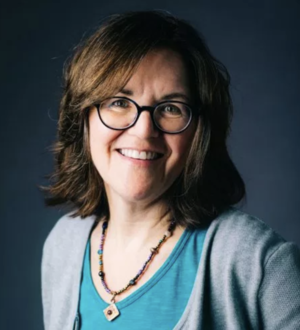Having read the galley for Emma Donoghue's last novel The Wonder, I put in a request for The Pull of the Stars before even reading the synopsis. I was not disappointed.
Donoghue revisits some of the same themes in this novel--an unmarried female nurse embracing scientific methods, women's lives in a repressive society, what we will do for family and love.
Set in 1918 in the middle of the Spanish Flu epidemic, in a Dublin maternity ward where an endless round of pregnant women ill with the flu come and go, the novel is a spine-tingling reminder of our vulnerability.
Donoghue began writing The Pull of the Stars in 2018. How chillingly providential that it would be published the year of the novel cornoavirus covid-19 epidemic.
Today as I write this review, violence and protests have been breaking out across America, demanding a just society. Donoghue's novel depicts a world crushed by WWI, men broken in body and spirit like ghosts of the people they had once been. Unwed mothers are taken in by organizations that demand repayment through a kind of slave labor, their babies becoming trapped in servitude and subject to abuse.
The myth of progress is challenged by reminders of how little has changed in 100 years. War still crushes, the human body still is attacked by enemies large and small, society remains inequitable, ingrained social prejudices destroy lives.
Nurse Julia Powers is dedicated and hard-working, although underpaid and lacking authority. Readers spend several days with Julia at work, the action taking place in a small hospital room of three hospital cots.
This is not a novel for the squeamish. So many things go wrong. In graphic detail, readers endure the female patient’s suffering, the heroic endeavor to save the lives of mother and babies. We learn about their lives, their illness, their deaths.
Every loss is marked by Julia on her silver cased watch, a memorial and reminder to never forget.
This is not a novel to escape, the world too closely reflects what we are dealing with with today's pandemic. Warnings, fake cures, the uncertainty, government endeavoring to play down the threat--nothing has changed.
I finished the novel in two days.
I received a free egalley from the publisher through NetGalley. My review is fair and unbiased.
Read an interview with Donoghue discussing the novel published in the Atlantic
https://www.theatlantic.com/books/archive/2020/05/emma-donoghue-interview-the-pull-of-the-stars-the-blood-tax/610828/
The Pull of the Stars
by Emma Donoghue
Little, Brown and Company
Pub Date: July 21,2020
Hardcover $28 (USD)
ISBN: 9780316499019
PRICE $28.00 (USD)
from the publisher
Dublin, 1918: three days in a maternity ward at the height of the Great Flu. A small world of work, risk, death, and unlooked-for love, by the bestselling author of The Wonder and ROOM
In an Ireland doubly ravaged by war and disease, Nurse Julia Power works at an understaffed hospital in the city center, where expectant mothers who have come down with the terrible new Flu are quarantined together. Into Julia's regimented world step two outsiders -- Doctor Kathleen Lynn, a rumoured Rebel on the run from the police , and a young volunteer helper, Bridie Sweeney.
In the darkness and intensity of this tiny ward, over three days, these women change each other's lives in unexpected ways. They lose patients to this baffling pandemic, but they also shepherd new life into a fearful world. With tireless tenderness and humanity, carers and mothers alike somehow do their impossible work.
In The Pull of the Stars, Emma Donoghue once again finds the light in the darkness in this new classic of hope and survival against all odds.





















